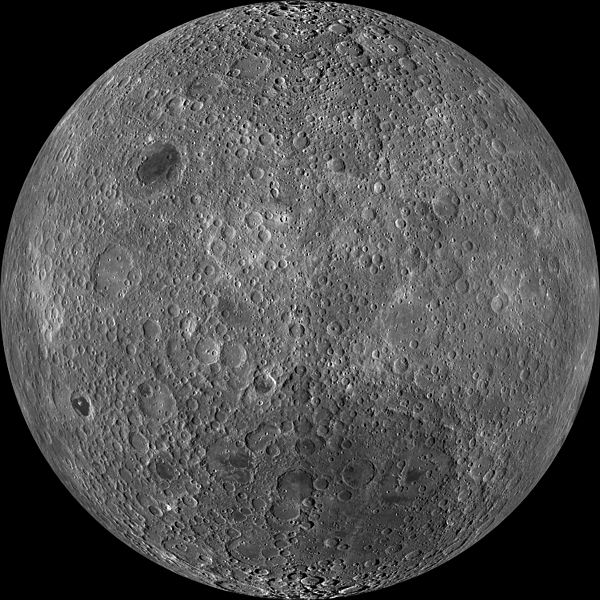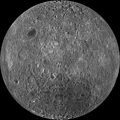Файл:Moon Farside LRO.jpg

Розмір того нагляду: 600 × 600 пікселів. іншы розлишіня: 240 × 240 пікселів | 480 × 480 пікселів | 768 × 768 пікселів | 1024 × 1024 пікселів | 2048 × 2048 пікселів | 18 000 × 18 000 пікселів.
Оріґіналный файл (18 000 × 18 000 пікселів, розмір файлу: 85,34 МБ, MIME-тип: image/jpeg)
Історія файлу
Кликнути на датум/час, жебы видїти, як тогды вызерав файл.
| Датум/час | Мініатура | Розмір обєкта | Хоснователь | Коментарь | |
|---|---|---|---|---|---|
| актуална | 01:47, 20 марца 2014 |  | 18 000 × 18 000 (85,34 МБ) | Huntster | High resolution mosaic. |
| 06:12, 9 апріля 2011 |  | 1600 × 1600 (1,44 МБ) | Bubba73 | {{Information |Description ={{en|1=Far side of the Moon, by NASA's Lunar Recon. Orbiter}} |Source =http://apod.nasa.gov/apod/image/1104/farside_lro1600.jpg |Author =NASA - LRO |Date =2011? |Permission = |other_versions = } |
Хоснованя файлу
Не є сторунок, хоснувучых сесь файл.
Ґлобалне хоснованя файлу
Тот файл хоснують такы іншы вікі:
- Хоснованя на af.wikipedia.org
- Хоснованя на az.wikipedia.org
- Хоснованя на be.wikipedia.org
- Хоснованя на bjn.wikipedia.org
- Хоснованя на bn.wikipedia.org
- Хоснованя на bs.wikipedia.org
- Хоснованя на ca.wikipedia.org
- Хоснованя на cs.wikipedia.org
- Хоснованя на de.wikipedia.org
- Хоснованя на en.wikipedia.org
- Хоснованя на en.wikibooks.org
- Хоснованя на en.wikiversity.org
- Solar System, technical/Moon
- User:Marshallsumter/Radiation astronomy2/Visuals
- Draft:Original research/Planets
- User:Marshallsumter/Radiation astronomy2/Visuals/Quiz
- User:Marshallsumter/Rocks/Rocky objects/Astronomy
- User:Marshallsumter/Radiation astronomy/Courses/Principles/Hourly 2
- User:Marshallsumter/Radiation astronomy/Courses/Principles/Midterm quiz
- User:Marshallsumter/Radiation astronomy/Courses/Principles/Final quiz
- Titan/Quiz
- User:Marshallsumter/Rocks/Rocky objects
- Draft:Enceladus/Quiz
- Moon/Quiz
- Stars/Sun/Heliology/Quiz
- Earth/Quiz
- Stars/Reds/Quiz
- Draft:Dione/Quiz
- User:Marshallsumter/Radiation astronomy2/Scattered disks/Quiz
- User:Marshallsumter/Radiation astronomy1/Kuiper belts/Quiz
- Liquids/Liquid objects/Moon
- User:Marshallsumter/Radiation astronomy/Craters
- Хоснованя на es.wikipedia.org
- Хоснованя на et.wikipedia.org
Указати ґлобалне схоснованя того файлу.


